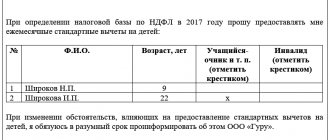Is the employer obligated to pay salary advances?
The procedure for paying remuneration to employees of the enterprise is regulated by the provisions of legislative acts, as well as internal documents of the enterprise itself.
It is stipulated that salary payments to employees must be made at least twice a month. However, it is necessary to take into account whether these people had working days during the period under review. If the employee worked, then he has the right to receive the first part of the salary.
However, the management of the organization does not have the right to cancel the transfer. For this, appropriate measures may be applied to him, including payment of compensation to the employee for days of delay in the employee’s remuneration.
In addition, concluded agreements with people working at the enterprise may provide for more frequent payment terms. If they are specified in the employment contract or internal local regulations of the organization, the company administration is obliged to comply with them.
Attention! The company's management will not be saved by an employee's voluntary refusal to receive his salary in installments in several stages. The only option not to pay the first part to the employee is his absence from work during this period of time.
Deadlines for payment of advance payments and wages in 2018
The days on which it is necessary to issue an advance and salary must be clearly stated in the employment contract with the employee, as well as in the local acts of the organization (for example, in the regulations on wages).
The law clearly states that no more than 15 days should pass between the issuance of these two parts. In addition, it is established that earnings for the first part of the month must be issued between the 15th and 30th days of the current month, and the final payment must be made between the 1st and 15th days of the month following it.
The administration does not have the right to establish in the documents a period of days during which the payment is expected to be made. However, it can be stipulated that the payment must be made before the specified date. Also, inaccurate dates should not be recorded. The document must clearly indicate the days on which the payment is made, and exactly what part of the salary is paid at that moment.
The law does not prohibit payments at more frequent intervals, for example every 10 days. But in any case, these dates must be indicated in the documents.
Attention! If the day on which the payment of one of the earnings falls falls on a non-working day, then the employer is obliged to make the payment on the previous working day.
It is not recommended to indicate the 15th and 30th as days of issue. This is due to the fact that in many months of the year the 30th day is the last, and therefore on this day the accountant will have to calculate and withhold personal income tax from the advance payment.
You might be interested in:
Who can receive maternity capital, the amount, what it can be used for in 2021
Advance and vacation
All employed citizens have the right to go on vacation. In any case, it will fall on one of the billing periods. The procedure for calculating the advance will depend on the day you leave for rest and return to work. Let's look at a few examples:
- Vacation from the 1st to the 15th - in this case, the employer has the right not to accrue an advance payment, since there were no days actually worked in the first half of the month. In the commentary to the resolution of the Ministry of Labor, such a procedure is permissible;
- Vacation from the 5th to the 20th - in this example, the person was on duty for four days at the beginning of the month, for which he received wages in the first half of the month;
- Vacation from the 10th to the 25th - since the vacation period covered only five days of the first part of the billing period, the advance will be paid for the remaining days.
The procedure for calculating the amount of payment will depend on the one adopted by the company: taking into account weekends and holidays or without them.
Salary advance in 2021: new calculation
The rules for determining salary advances in 2021 have changed. Back in August 2021, the Ministry of Finance issued a letter in which it clarified the rules for calculating the advance payment. Now it has been precisely determined which payments must be taken into account when calculating this part of the salary, and which are applied only when determining earnings for the entire month.
The recommendations can be divided into three steps.
Step 1. Determine the number of days worked for the period
According to the explanations, the advance must be determined in proportion to the number of days worked in the first part of the month. This means that how much the employee actually worked during this period of days is how much he needs to be paid.
It follows that if on some of these days the employee did not perform his duties due to vacation or illness, then there is no need to pay an advance for them.
Step 2. Determine the charges that need to be included in the advance payment
The Ministry of Finance believes that to calculate the advance, the following types of accruals must be taken into account:
- The amount of the employee’s salary or tariff rate for the period;
- Allowances and additional payments, the receipt of which does not depend on the employee’s performance during the pay period, fulfillment of the monthly work schedule, or compliance with work schedules. This includes, for example, additional payment for going to work at night, for combining several positions, for length of service, etc.
If you calculate the advance only taking into account the salary or tariff rate, then the regulatory authorities will consider such a step to be an infringement of the employee, which will lead to the imposition of a fine of up to 50 thousand rubles.
Step 3. Determine accruals that do not need to be used
So, if an advance is determined, then the following accruals do not need to be taken into account:
- Bonuses that are paid based on monthly work results;
- Additional payments, the determination of which depends on the monthly work and are made only at the end of the billing month. For example, extra pay for overtime work.
The size of these payments will be known only after the end of the month at the time of the general salary calculation.
As you know, advance payments do not need to be subject to personal income tax. However, there is always a risk that the company, having given the employee the full salary for the first half of the month, will not be able to withhold tax for the second half. This could happen, for example, if an employee becomes ill.
Therefore, experts recommend applying a coefficient of 0.87 to the calculated advance amount. As a result, even if there are no charges in the second half of the month, the amount for withholding and transferring tax will still remain. To “legalize” this calculation procedure, it is necessary to describe it in the company’s local documents and familiarize employees with them.
It is recommended to calculate the advance payment as follows.
The portion of the salary advance is equal to:
| Advance from salary | = | Salary | : | Total number of working days in a month | X | Number of working days worked |
Part of the advance from other additional payments is equal to:
| Advance from additional payments | = | Amount of surcharge | : | Total number of working days in a month | X | Number of working days worked |
The total advance amount is:
| Advance for the first half of the month | = | Advance from salary | + | Advance from additional payments |
Example of calculating salary advance
Many online resources offer their users a calculator for calculating salary advances in 2021. Let’s look at a practical example of how to calculate salary advances in 2018.
Example
A workshop worker works 5 days a week, 8 hours a day, and his salary is 20,000 rubles. On October 5, 2021, the employee worked 2 hours overtime. During the first half of the month there were 11 working days.
- The average number of working hours per month is 164.42. Let's calculate the employee's earnings for 1 hour of work:
20,000 rub. / 164.42 = 121.64.
- Processing is paid at one and a half times the rate, respectively:
121,64 * 2 * 1,5 = 364,92
- A = (20,000 rubles / 22 days * 11 days + 364.92) * 0.87 = 8385.52 rubles.
The employee's advance will be 8385.52 rubles.
Similar articles
- Responsibilities of a Payroll Accountant
- How much is salary advance?
- What percentage of the salary is the advance in 2017?
- Personal income tax on salary advance 2016-2017
- How to reflect an advance in 6 personal income taxes
Example of calculating the advance payment
Fillipova A. N. Works as a cashier at Rassvet LLC. Her salary is set at 18,000 rubles. She also receives an additional payment for combining the position of an accountant - 8,000 rubles. If the sales department fulfills the plan for selling products, all employees are also awarded a bonus in the amount of 30% of the salary.
You might be interested in:
Payroll taxes: what the employee pays and what the employer pays in 2021, the timing of their payment to the budget
There are 21 working days in a billing month, the advance is paid for 11 days worked.
We will calculate the advance payment. It will include the salary and the amount of additional payment. Since the bonus is calculated only based on monthly sales results, it is not included in the calculation of the advance payment.
The salary for the first half of the month will be: 18,000 / 21 x 11 = 9,429 rubles.
The additional payment for the same period will be: 8000 / 21 x 11 = 4191 rubles.
Total total advance amount: 9429 + 4191 = 13620 rubles.
bukhproffi
Important! Income tax is not deducted from the advance payment, therefore the entire calculated amount must be issued to the employee on the day established in local regulations.
Concept
Art. 136 of the Labor Code of the Russian Federation says that the employer is obliged to pay wages at least twice a month - an application for receiving an advance ahead of schedule.
The payment terms have also been established - for the first half of the month worked from the 16th of the same month to the 30th (31st). For the second half – from the 1st to the 15th of the month following the period worked.
Payment for the first half of the month in the professional environment of accountants is called an advance.
In the strict sense of the word, this payment is not an advance payment. Advance payment is an advance payment for future work performed, services, or acquired material assets. In this case, payment is made for time worked.
The term “advance”, despite its inaccuracy, is widespread and used in the field of payroll issues.
We recommend reading: is an advance payment due if the employee was on vacation?
Taxes
The Labor Code establishes that an employee receives his salary in two parts - an advance and the rest of his earnings. In this case, the advance must be paid in the second half of the month.
By law, the day on which the employee received his income is considered the final day of the month. Since the advance is usually paid before this point, there is no need to calculate and withhold income tax on it. The amount of personal income tax is supposed to be determined when the final part of earnings is issued and transferred to the budget the next day.
However, there is an exception to this rule. If the advance is issued on the last day of the month, then, according to legislative acts, this day is considered the day the employee receives income. This means that tax must be determined and withheld on the advance amount. This position is voiced by judges in proceedings between companies and the Federal Tax Service.
Attention! The amount of contributions is determined when calculating the total amount of salary, and is transferred before the 15th day of the period following the billing month. Therefore, they do not in any way affect the advance payment, no matter what day of the month it is made.
See more about payroll taxes.
Responsibility of the employer for failure to pay the advance
The Labor Code does not establish the concept of advance payment. What we call this word is one of the parts of the salary. Therefore, failure to pay an advance is subject to the same liability as failure to pay all earnings.
The law determines that the culprit may be subject to three types of liability:
- Material - occurs immediately the next day after the fixed date of issue. The amount of the fine is calculated based on the amount not paid and the total period of delay as 1/150 of the debt for each day of delay. This compensation must be accrued and paid to each employee, regardless of the reason for which he was not paid on time.
- Administrative - imposed by inspection bodies when they detect a delay in payment of wages. Can be awarded to a responsible person, company or individual entrepreneur. The maximum amount of punishment is 50 thousand rubles, which can be increased if a similar violation is repeated.
- Criminal - imposed by a court decision in case of deliberate non-payment for more than 2 months. Applies to the director of the company or entrepreneur. The maximum penalty is a fine of 500 thousand rubles, or imprisonment for up to 3 years.







